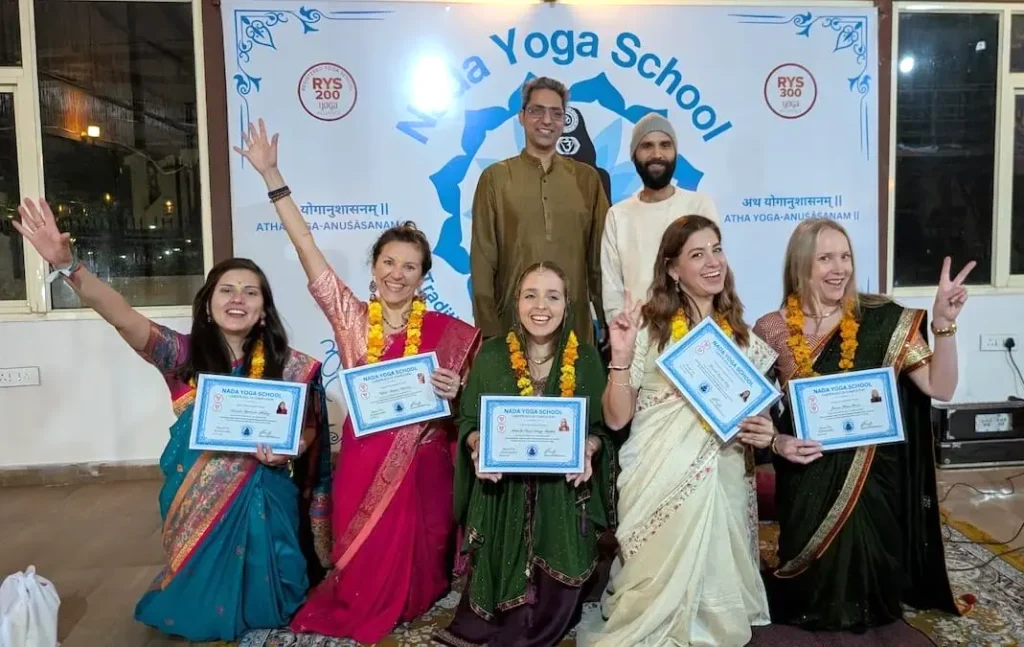Nada Yoga Teacher Training in Rishikesh, India
Limited seats · Yoga Alliance Certified · Trusted by 6830+ global students
Awaken Through the Yoga of Sound
Imagine waking up to the sound of temple bells, the distant flow of the Ganga, and the soft vibration of the tanpura resonating through the morning air.
In that stillness, every sound becomes sacred and every vibration a doorway to the divine.
This is Nada Yoga, the Yoga of Sound, where silence sings, and listening becomes a path to liberation.
At Nada Yoga School in Rishikesh, you are invited to rediscover the sacred relationship between sound, consciousness, and the Self.
Join seekers, musicians, and yoga practitioners from around the world in a month-long Nada Yoga Teacher Training Course immersion that blends ancient wisdom, musical practice, and meditative awareness.
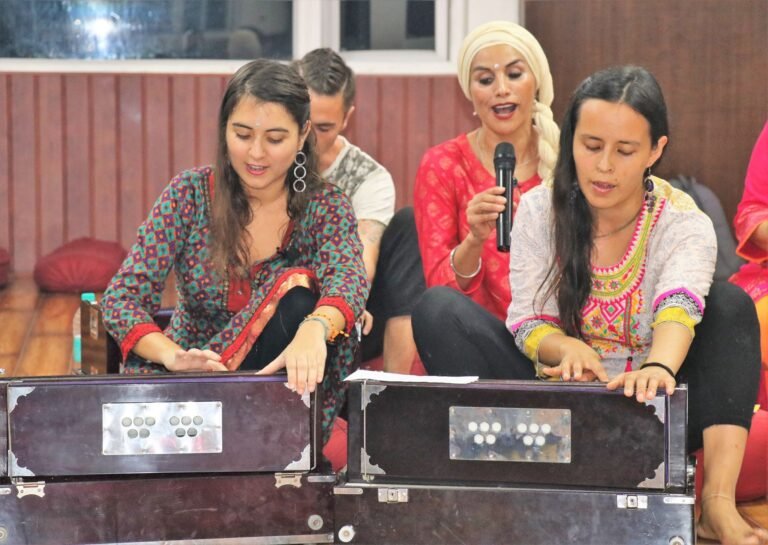
Nada Yoga TTC in Rishikesh
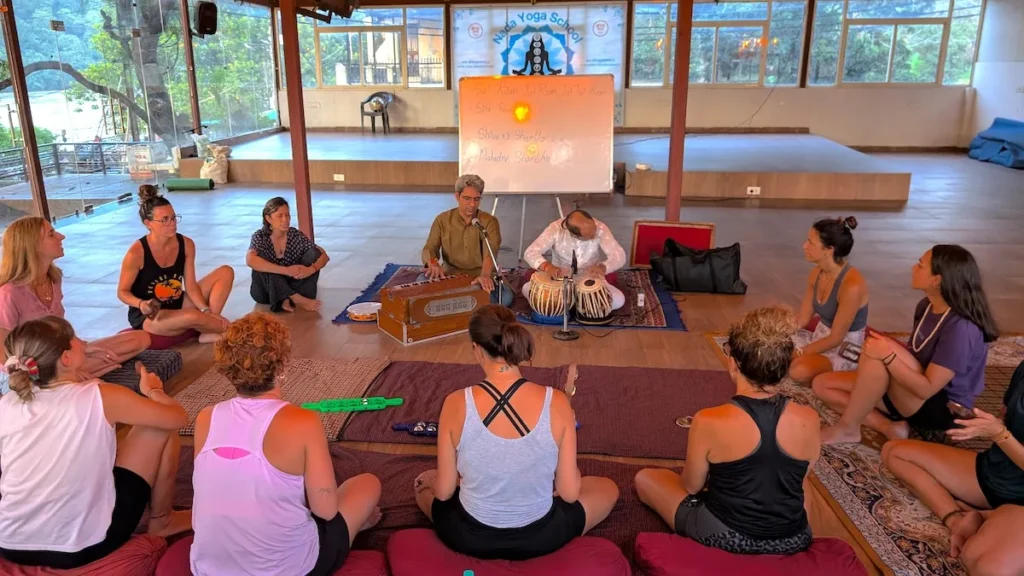
What is Nada Yoga?
Long before music became an art form, sound was revered as the very essence of creation.
The ancient sages of India spoke of Anahata Nada: the unstruck sound, the vibration from which the universe itself was born.
Nada Yoga, from the Sanskrit Nada (sound) and Yoga (union), is the sacred science of using vibration, awareness, and deep listening to harmonize body, mind, and spirit.
In this practice, sound is not entertainment, it is transformation.
Through specific tones, mantras, and inner listening, you learn to awaken your subtle energy, calm your mind, and return to your natural state of peace.
During this training:
Calm the nervous system through rhythmic sound and breath awareness
Balance the chakras using specific tones and frequencies
Release emotional blockages through mantra chanting and voice activation
Deepen your meditation and enter silence effortlessly through sound
Awaken creativity and intuition, aligning with your authentic expression
Develop the confidence to guide others in sound meditation and Nada Yoga practices
You'll learn to:
Awaken subtle awareness through sacred sound
Use mantras, instruments, and voice for healing
Deepen meditation and self-realization through vibration
Facilitate sound-based practices for groups and individuals
Through this Nada Yoga teacher training program, you won’t just learn about sound; you’ll embody its healing vibration, becoming a living instrument of harmony and awareness.
About Nada Yoga School
📜
Yoga Alliance Certified (RYS 200)
💬
Internationally Recognized Certification
🌸
Teaching the Yoga of Sound Since 2008
Nestled in the foothills of the Himalayas, where the sound of the Ganga merges with the songs of temple bells, lies Nada Yoga School, a sanctuary for seekers of sound and silence.
Founded in 2008, the school was born from a simple vision: to preserve the ancient tradition of Nada Yoga and share it with the modern world in a way that is authentic, experiential, and deeply transformative.
For over a decade, Nada Yoga School has guided more than 6830 students from 40+ countries, helping them awaken their voice, balance their energy, and find inner harmony through vibration.
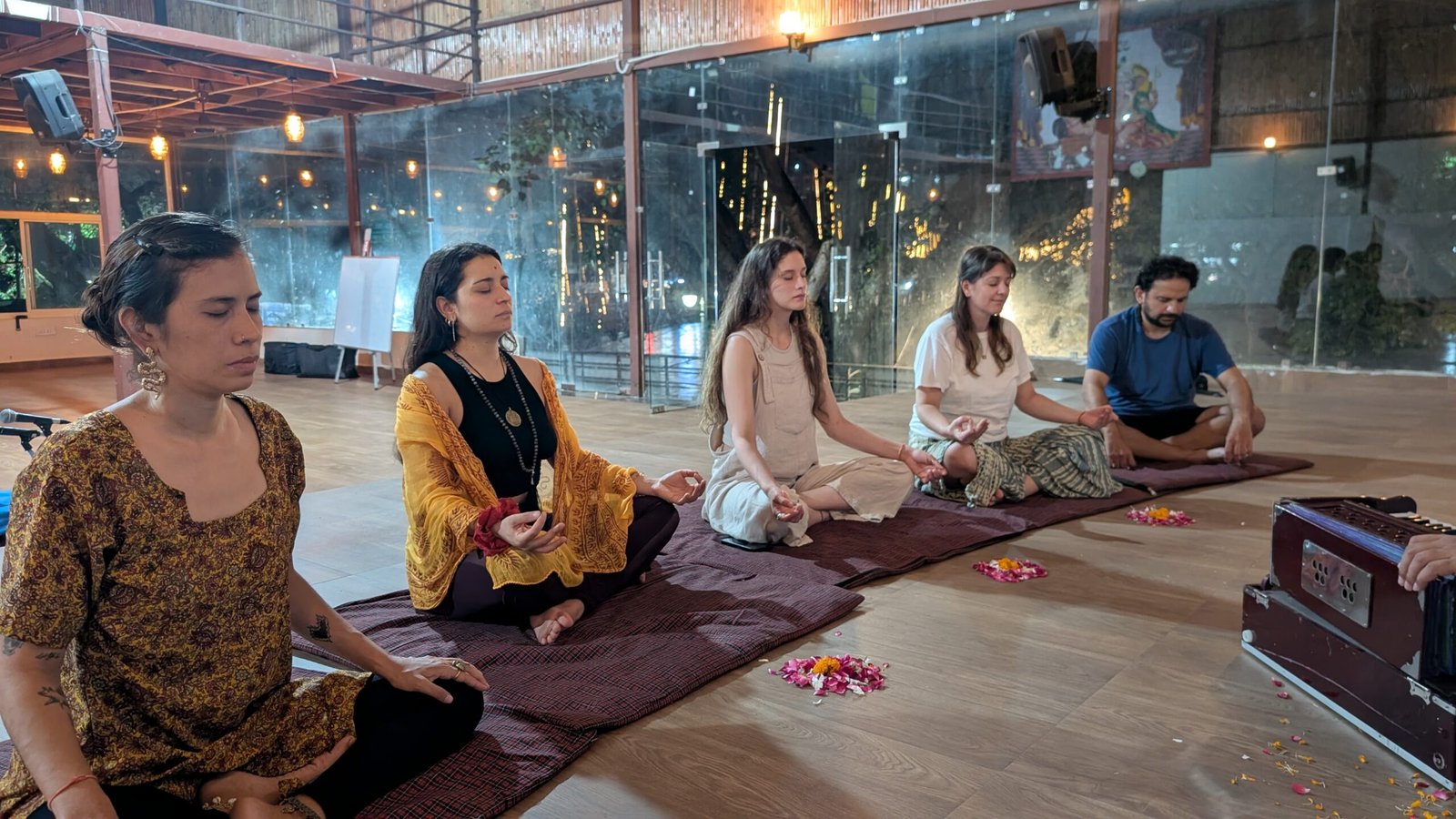
The Nada Yoga Experience
Every chant, every silence, every breath becomes a teacher. The entire environment, the flowing river, the chants from distant ashrams, and the sacred Himalayas support your transformation.
Study directly with experienced Indian masters who live and breathe Nada Yoga
Practice daily in a serene ashram setting, surrounded by Himalayan beauty
Experience authentic Indian culture blended with global community warmth
Build lifelong connections with like-minded seekers from across the world
The Journey Within – What You’ll Learn
Every sound you hear has the power to touch something deep within.
During your Nada Yoga Teacher Training, you will embark on a journey that moves through layers of learning from the ancient science of sound to the silence that exists beyond it.
Each week is designed to take you deeper, blending philosophy, practice, and personal transformation.
By the end of the course, you won’t just understand Nada Yoga; you will live it.
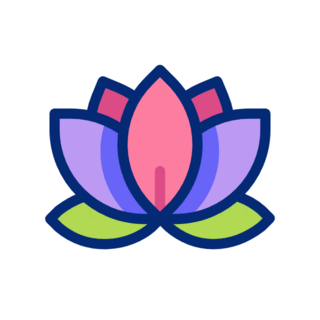
The Foundations of Nada Yoga
Your journey begins by understanding the origins of vibration itself.
You’ll discover how ancient yogis perceived sound as the source of all creation and how this insight forms the essence of yogic philosophy.
Through storytelling, reflection, and discussion, you’ll:
Explore the concept of Nada Brahma — “The World is Sound.”
Learn the four stages of sound (Para, Pashyanti, Madhyama, Vaikhari) and how they shape perception.
Understand the link between vibration, energy, and consciousness.
Experience how sound can dissolve the boundaries between the listener and the listened.
✨ By the end of this module, you’ll feel sound not just through your ears — but through your entire being.
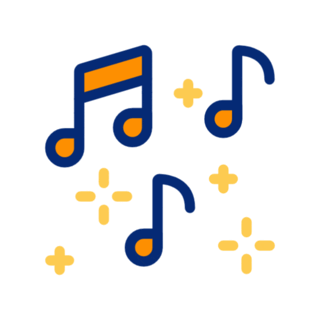
The Voice as a Sacred Instrument
Your voice is your most personal and powerful tool of transformation.
In this module, you’ll awaken and refine your natural sound — free from judgment or inhibition.
Through guided vocal (raga) practices, mantra chanting, kirtans, bhajans, and resonance exercises, you will:
Unlock your authentic voice and expand its emotional range.
Strengthen the connection between voice, breath, and prana.
Learn ancient Sanskrit mantras and their vibrational meanings.
Experience the joy of collective chanting and devotional singing (kirtan).
✨ Students often describe this phase as deeply healing — as if their voice finally remembers its true purpose.
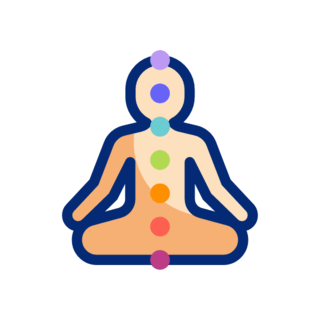
Sound, Chakras & Energy Anatomy
This module bridges the worlds of sound and subtle energy.
You’ll learn how vibration moves through the body, activating and balancing the seven chakras.
Through experiential practices, you’ll discover how to:
Use specific tones and frequencies to harmonize energy centers.
Recognize how sound affects mood, emotion, and nervous system states.
Integrate chanting, humming, and vowel sounds to cleanse energy blockages.
Meditate on sound to access deeper layers of awareness.
✨ You’ll begin to sense sound as light — a current that heals, restores, and reawakens your inner rhythm.

Instruments of Nada Yoga
In this hands-on module, you’ll learn to connect with sacred instruments that carry centuries of spiritual resonance.
Each instrument becomes an extension of your meditation:
Tanpura: the drone that represents the eternal OM.
Singing Bowls: harmonizing vibration that resets the nervous system.
Harmonium: for mantra chanting and group meditations.
Gongs, Sitar, Tabla, and others.
You’ll gain practical skills in playing, tuning, and integrating these instruments in personal and group settings.
✨ Even those with no musical background find this module transformative — it awakens creativity, confidence, and deep inner joy.

Teaching Methodology & Practicum
By this stage, sound is no longer just theory — it’s a lived experience.
Now, you’ll learn how to share it authentically with others.
This module prepares you to become a confident, heart-centered teacher or facilitator. You’ll learn to:
Design safe, effective Nada Yoga classes and workshops.
Structure sound meditations and mantra sessions for individuals or groups.
Cultivate presence, grounding, and energetic awareness while leading.
Integrate Nada Yoga into other disciplines — yoga, therapy, music, or education.
✨ You’ll complete your training not only as a teacher, but as a vessel of peace and resonance — someone who carries the vibration of healing wherever you go.

Introduction to Ayurveda
True healing begins when sound and nature move in rhythm.
In this special module, you’ll be introduced to Ayurveda, India’s ancient science of life — to understand how vibration influences body type, emotion, and health.
You’ll discover:
How the five elements (Pancha Mahabhutas) correspond to sound, taste, and energy.
The three doshas (Vata, Pitta, Kapha) and how sound affects each constitution.
Ayurvedic lifestyle and diet principles that support meditation and vocal clarity.
How to use sound, rhythm, and daily rituals to restore natural balance and vitality.
✨ This integration of Ayurveda and Nada Yoga helps you live in harmony — not just with sound, but with life itself.
Nada Yoga Teacher Training
An Overview of the Topics We Will Cover:
- What is Nada Yoga?
- Origin of Nada Yoga
- Types of Nada Yoga
- Nada Yoga Meditation
- Learn Indian Ragas
- Healing Through Indian Raagas
- Reading of Roman Transliteration of Devanagari
- How to read and chant verses and mantras
- Vedic Chanting and Their Rules
- Sanskrit alphabets, their sounds, and locations
- Accurate Sanskrit Pronunciation
- What is Mantra
- Types of Mantras
- Origin of Mantras
- Different Uses of Mantras
- How to Chant Mantras (sagun, nirgun, vedic, lokik, tantrik & beej mantras)
- How to use mantras for Meditation and its sequence
- How to play and lead Kirtans and Bhajans
- Learn to Play Kirtans & Bhajans on Sitar/Harmonium
- How to use singing bowls for your teaching and practice
- Music therapy and sound healing
- How to match your body's frequency to instruments sound
- Effect of sound or nada in your daily life
- Learn how to use everything you learn for teaching others and self-practice
A Day in the Life at Nada Yoga School
Every day at Nada Yoga School flows like a melody, a gentle rhythm of learning, reflection, and transformation.
From sunrise to sunset, each moment invites you to listen more deeply, not just to sounds around you, but to the silence within.
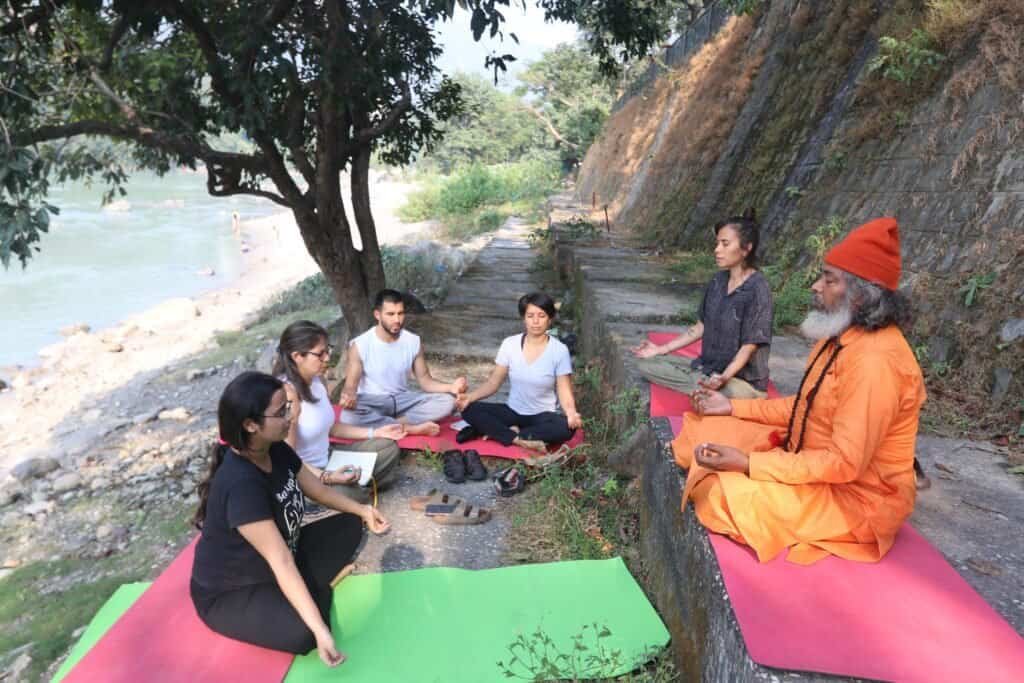
Morning:
Awakening the Inner Sound
As dawn spreads golden light over the Ganga, you sit in stillness with your fellow seekers as the day begins with Nada Sadhana chanting, breathwork (pranayama), yoga asana, and meditation to tune your energy.
Your mind quiets. Your breath deepens. You begin to sense the subtle vibration that underlies everything.
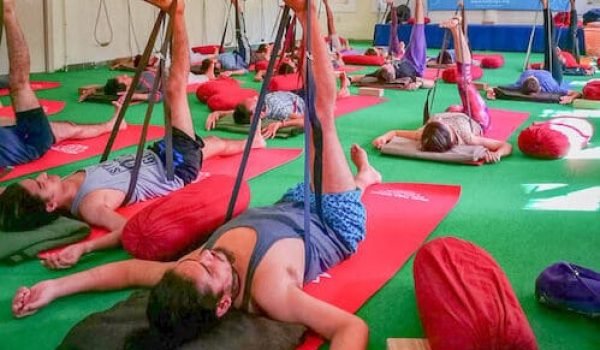
Late Morning:
Practice & Study
After a nourishing breakfast, you gather in the shala for guided sessions in Nada Yoga philosophy, vocal resonance, and mantra practice.
These sessions blend the science of sound with direct experience, helping you understand how vibration affects consciousness, emotion, and health.
Every chant becomes a lesson. Every silence, a revelation.
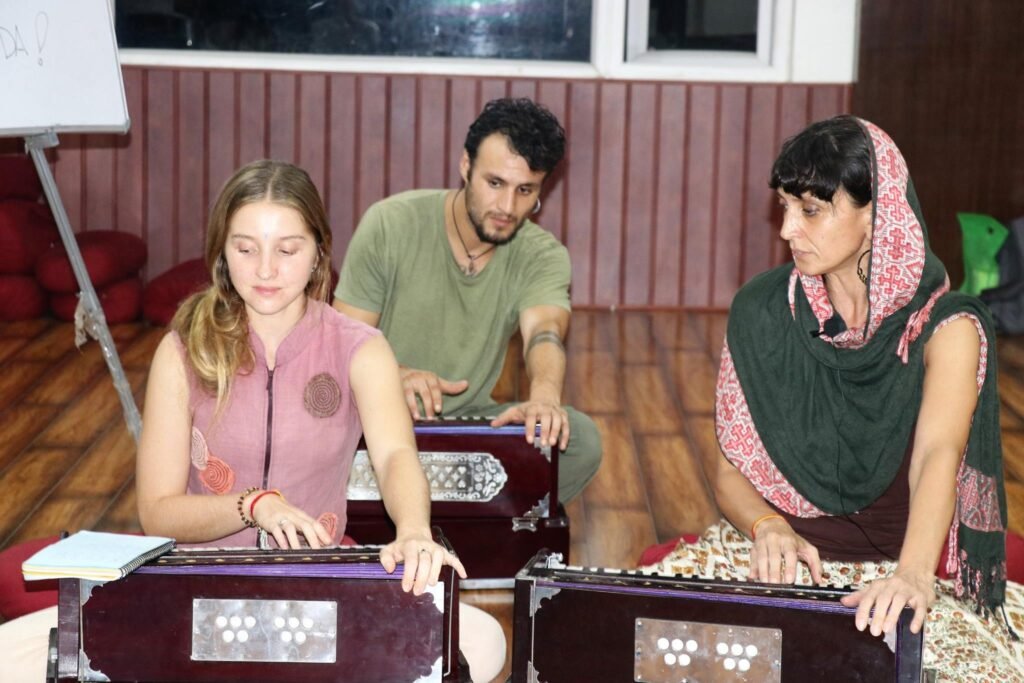
Afternoon:
Integration & Exploration
After a wholesome vegetarian lunch and a short rest, you immerse yourself in practical workshops, exploring singing bowls, harmonium, raagas, sitar, tabla, and/or tanpura.
The teacher guides you to feel sound rather than just play it to let your intuition and awareness lead.
Some afternoons include satsangs, temple visits, or nature walks along the Ganga.
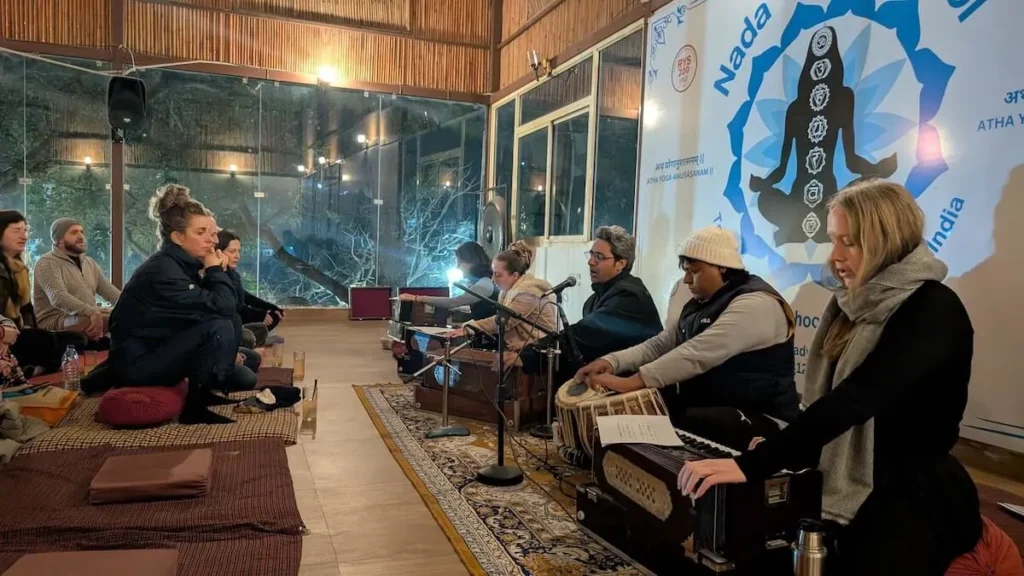
Evening:
Celebration & Reflection
As the sun sets behind the mountains, the campus vibrates with the sound of kirtan, voices blending into one field of devotion.
In that collective sound, something shifts inside you — a sense of unity, surrender, and joy.
Later, you gather for dinner and quiet reflection, journaling insights before drifting into deep, harmonious sleep.
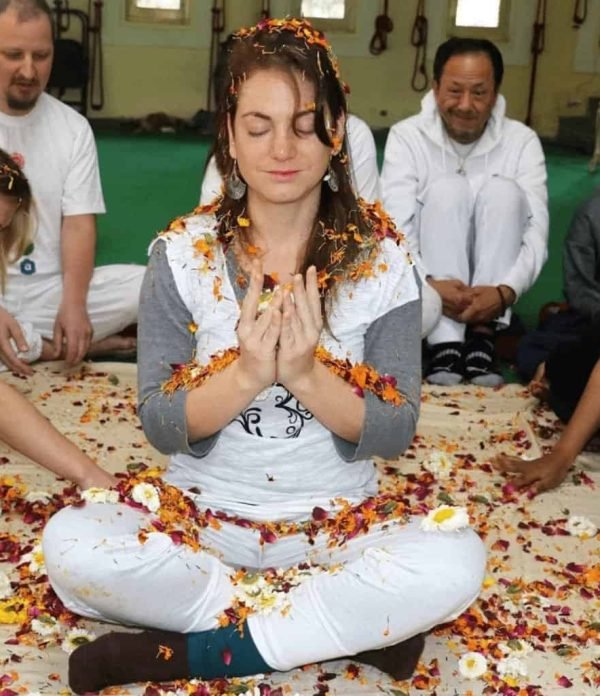
06:00 AM: Morning chanting & meditation
07:30 AM: Asana & Pranayama practice
09:00 AM: Breakfast
10:00 AM: Philosophy / Sound theory
12:30 AM: Lunch & rest
03:00 PM: Voice & Instrument practice
05:00 PM: Group Kirtan / Sound bath
07:00 PM: Dinner & silent reflection
The Power of Transformation
Many arrive at Nada Yoga School seeking a course.
They leave having experienced a profound inner shift, a change that words can barely describe.
As you chant sacred mantras, feel resonances vibrating through your chest, and rest in pure silence, something begins to awaken inside you, an awareness that was always there, waiting.

Through the rhythm of daily practice and the collective energy of community, you begin to:
Quiet the restless mind
experience deep inner peace.
Release emotional tension
Anxiety replaced by calm presence.
Increase intuition & creativity
Guided by sound rather than logic.
Find your authentic voice
Both literal and spiritual.
Reconnect with inner harmony
Rediscover purpose and self-trust.
Students often describe the experience as life-changing not because of what they learn about sound, but because of how deeply they learn to listen. When you complete this training, you don’t just receive a certificate; you carry within you a vibration, an inner resonance that continues to guide your journey long after you’ve left Rishikesh.
Certification & Continuing Your Journey
Upon successful completion, you’ll receive an internationally recognized Nada Yoga Teacher Training Certificate from Nada Yoga School, registered with Yoga Alliance (RYS 200).
This certification empowers you to:
Teach Nada Yoga, Mantra Meditation, and Sound Healing classes worldwide.
Lead sound baths, voice activation, and group chanting sessions.
Integrate vibration and mindfulness into yoga, therapy, or artistic work.
Continue your studies with advanced training in sound healing, Bhakti yoga, or Nada meditation.
But more than that, you’ll walk away with a sense of inner mastery.
You’ll know how to create spaces where others can heal, open, and remember who they truly are.
Food and Accommodation
At Nada Yoga School, we aim to create an environment that nurtures a yogic lifestyle to support you throughout your yoga teacher training course journey.
Food:
Being the best yoga school in Rishikesh, we serve freshly prepared vegetarian meals three times a day (breakfast/lunch/dinner) along with herbal teas, all cooked in our fully equipped kitchen using filtered water for quality and hygiene. Please inform us of any dietary restrictions.
Accommodation:
Stay is provided in shared, furnished double rooms with attached bathrooms featuring hot and cold water and ceiling fans. Bed linen, a towel, and a door lock are provided, though students are responsible for laundering their sheets and keeping their rooms tidy. Single occupancy rooms can be arranged upon request before arrival, subject to availability and additional charges.
We request students to arrive one day prior to the start of the program to settle in, receive room assignments, and complete fee payments. Check-out is scheduled on the last day of the course, and we ask that any borrowed items be returned before departure.

Our Team of Professional Yoga Teachers
Nada Yoga School is comprised of a dynamic, experienced team of professional yoga teachers, who have in-depth knowledge encompassing diverse fields of yoga, offering students an initiation (exploration) into full yogic knowledge.

NadYogi Bhuwan Chandra
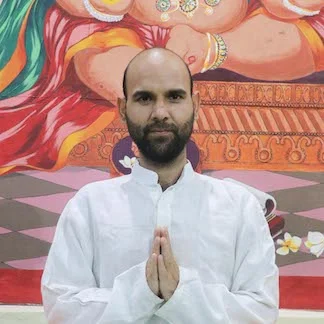
Yogi Mohan Panwar
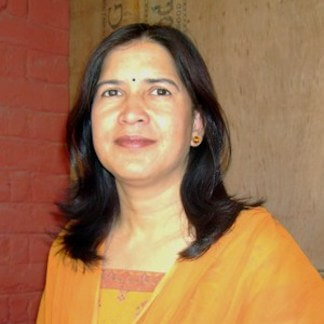
Dr. Usha Vaishnava
and other guest teachers.
Nada Yoga Teacher Training: Upcoming Dates
When you feel the call to begin this journey, trust it.
Sound has a way of calling the right people at the right time — and if you are reading this, perhaps it’s calling you too.
Our Nada Yoga Teacher Training is offered several times each year to allow you to join when your heart is ready.
Dates
08 November - 04 December 2025
01 January - 27 January 2026
01 March - 27 March 2026
01 April - 27 April 2026
01 August - 27 August 2026
01 September - 27 September 2026
01 November - 27 November 2026
Early Bird Fee
2000 USD
1597$
Hurry! Only 7 Spots Left!
No hidden fees. No extra charges. Just a complete, all-inclusive experience designed to support your learning and inner growth.
(You only need to pay a deposit of $197 to reserve your spot. The remaining fee can be paid upon your arrival at Nada Yoga School)
Fee Includes:
- Access to a private nada yoga community to support lifetime learning
- Textbooks and printed course materials
- Welcome Kit (Jute Bag, T-Shirt, Notebook, Pen, Neti Pot, etc.)
- Lessons from 8 professional staff yoga teachers and guest lecturers.
- Music Concerts by renowned musicians of Rishikesh, India
- Use of props during the course (yoga mats, musical instruments, props, etc.)
- Vegetarian meals (3 times a day)
- Comfortable accommodation in the first established ashram in Rishikesh – Swargashram
- Local sightseeing (Sunrise at Kunjapuri Temple, Ganga Arti, etc.)
- Ganges river rafting
- Sunday movie night
- Wireless Internet Connectivity
Your Invitation
“Sound is the bridge between the outer and the inner world.
When you listen deeply, you return home to yourself.”
If your heart resonates with these words, you are ready.
The Nada Yoga Teacher Training is more than a certification — it’s a journey of awakening through vibration, silence, and awareness.
It’s a chance to step away from the noise of the world and reconnect with the still, steady rhythm of your own soul.
Whether you are a yoga teacher, a healer, a musician, or simply a seeker of truth, this training will give you the tools to transform yourself and to guide others toward peace, clarity, and wholeness.
Join us at Nada Yoga School, Rishikesh — where every sunrise begins with a mantra, and every evening ends in meditation.
Experience the sound of your soul. Begin your journey today!

